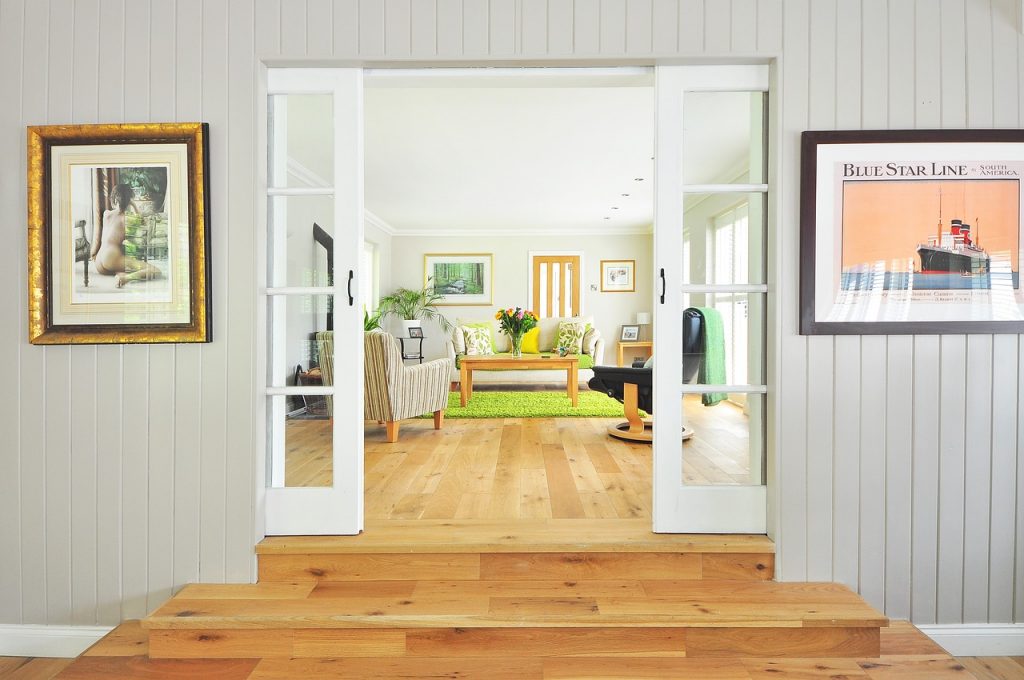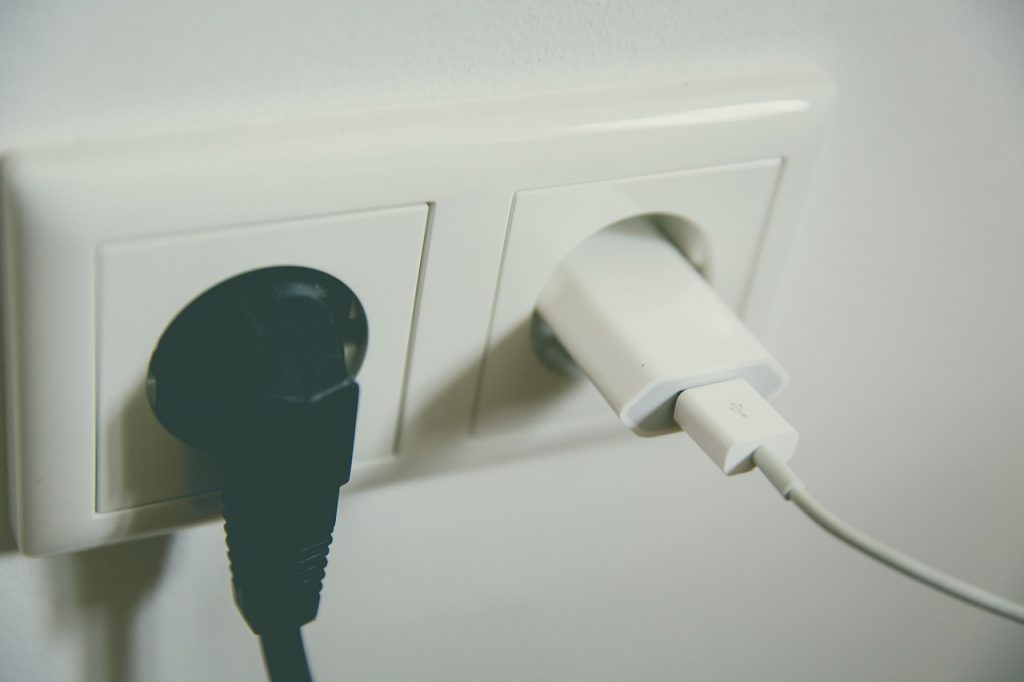Understanding your energy consumption is the initial step towards improving your home’s energy efficiency. Begin by conducting an energy audit to identify where and how you are utilising energy in your property. This can be accomplished by examining your utility bills, inspecting your appliances and electronics, and evaluating your heating and cooling systems.
By comprehending your energy usage patterns, you can identify areas where improvements can be made to reduce your overall energy consumption. Another method to understand your energy usage is by employing a home energy monitor. These devices provide real-time information about your energy consumption, enabling you to observe which appliances and electronics are consuming the most energy.
Armed with this knowledge, you can make informed decisions about how to reduce your energy usage and save money on your utility bills. Additionally, consider investing in smart plugs and power strips that can monitor and control the energy usage of individual devices, providing even more insight into your energy consumption.
Summary
- Understanding your energy usage is the first step to making your home more energy-efficient. Monitor your energy consumption and identify areas where you can make improvements.
- Implementing energy-efficient appliances can significantly reduce your energy usage. Look for appliances with high energy efficiency ratings and consider replacing old, inefficient appliances with newer models.
- Utilising natural light and ventilation can help reduce the need for artificial lighting and air conditioning. Keep curtains and blinds open during the day and use fans to circulate air.
- Insulating your home is crucial for maintaining a comfortable temperature and reducing energy waste. Ensure that your walls, windows, and doors are properly insulated to prevent heat loss in the winter and heat gain in the summer.
- Using energy-efficient lighting, such as LED bulbs, can lower your energy consumption and save you money on your electricity bills. Make the switch to energy-efficient lighting throughout your home.
- Unplugging electronics and appliances when they are not in use can prevent “phantom” energy usage. Use power strips to easily turn off multiple devices at once and reduce standby power consumption.
- Consider eco-friendly heating and cooling options, such as heat pumps and solar panels, to reduce your reliance on traditional energy sources and lower your carbon footprint. These options may require an initial investment but can lead to long-term energy savings.
Implementing Energy-Efficient Appliances
One of the most effective ways to reduce your energy usage is by replacing old, inefficient appliances with energy-efficient models. Look for appliances with the Energy Star label, which indicates that they meet strict energy efficiency guidelines set by the Environmental Protection Agency. Energy-efficient appliances use less energy to operate, which can result in significant savings on your energy bills over time.
When shopping for new appliances, consider the size and capacity of the appliance, as well as its energy efficiency rating. For example, a smaller refrigerator will use less energy than a larger one, and a front-loading washing machine is typically more energy-efficient than a top-loading one. Additionally, consider investing in smart appliances that can be programmed to run during off-peak hours when electricity rates are lower.
By implementing energy-efficient appliances in your home, you can reduce your energy usage and lower your carbon footprint.
Utilising Natural Light and Ventilation

Maximising natural light and ventilation in your home is another way to reduce your energy usage. During the day, open curtains and blinds to let in natural light, reducing the need for artificial lighting. Additionally, consider installing skylights or solar tubes to bring even more natural light into your home.
Not only will this help to reduce your reliance on electric lighting, but it can also improve the overall ambiance of your living space. In addition to natural light, proper ventilation is essential for maintaining a comfortable and energy-efficient home. Use ceiling fans to circulate air and keep your home cool in the summer, and open windows to let in fresh air whenever possible.
This can help to reduce the need for air conditioning and improve indoor air quality. Consider installing a whole-house ventilation system to ensure that fresh air is constantly circulating throughout your home. By maximising natural light and ventilation, you can reduce your energy usage and create a more comfortable living environment.
Insulating Your Home
| Insulation Type | Material | R-Value |
|---|---|---|
| Loft Insulation | Mineral Wool | 3.3 – 4.3 per inch |
| Cavity Wall Insulation | Polystyrene Beads | 2.0 – 3.5 per inch |
| Solid Wall Insulation | Expanded Polystyrene | 3.6 – 4.2 per inch |
Proper insulation is crucial for maintaining a comfortable and energy-efficient home. Insulation helps to keep warm air inside during the winter and prevent hot air from entering during the summer, reducing the need for heating and cooling. Start by insulating your attic, as this is where a significant amount of heat loss occurs in many homes.
Additionally, insulate walls, floors, and crawl spaces to further improve the energy efficiency of your home. When choosing insulation materials, consider factors such as R-value, which measures the material’s thermal resistance, as well as its environmental impact. Look for insulation made from recycled or sustainable materials, such as cellulose or wool, to minimise the environmental impact of your home improvements.
Proper insulation not only reduces your energy usage but also improves the comfort of your home by maintaining a consistent temperature throughout the year. Another way to improve the insulation of your home is by upgrading windows and doors. Look for energy-efficient windows with double or triple glazing and low-emissivity coatings to reduce heat transfer.
Additionally, consider installing weather-stripping and caulking around doors and windows to prevent drafts and air leaks. By properly insulating your home, you can reduce your energy usage and create a more comfortable living environment for you and your family.
Using Energy-Efficient Lighting
Switching to energy-efficient lighting is a simple yet effective way to reduce your energy usage. Replace traditional incandescent bulbs with LED or CFL bulbs, which use significantly less energy and last much longer. LED bulbs are particularly efficient and come in a variety of styles and colours to suit any room in your home.
Additionally, consider installing dimmer switches to further reduce energy usage and create a more versatile lighting system. Another way to maximise the efficiency of your lighting is by using natural light whenever possible. As mentioned earlier, open curtains and blinds during the day to let in natural light, reducing the need for artificial lighting.
Additionally, consider installing motion sensors or timers to automatically turn off lights when they are not in use. By using energy-efficient lighting and maximising natural light, you can significantly reduce your energy usage and lower your electricity bills.
Unplugging Electronics and Appliances

Many electronics and appliances continue to draw power even when they are turned off, contributing to “phantom” or standby power usage. To reduce this unnecessary energy consumption, unplug electronics and appliances when they are not in use or use smart power strips that automatically cut power to devices when they are turned off. This simple habit can help to reduce your overall energy usage and save money on your utility bills.
Another way to minimise standby power usage is by using energy-efficient electronics and appliances that have low standby power consumption. Look for devices with the Energy Star label, which indicates that they meet strict energy efficiency guidelines set by the Environmental Protection Agency. Additionally, consider investing in smart home technology that allows you to monitor and control the energy usage of individual devices remotely.
By unplugging electronics and appliances when they are not in use and investing in energy-efficient technology, you can reduce your energy usage and lower your carbon footprint.
Eco-Friendly Heating and Cooling Options
Heating and cooling account for a significant portion of a home’s energy usage, so implementing eco-friendly options in this area can lead to substantial energy savings. Start by upgrading to a high-efficiency heating and cooling system that uses less energy to maintain a comfortable temperature in your home. Look for systems with a high Seasonal Energy Efficiency Ratio (SEER) for air conditioners and a high Annual Fuel Utilization Efficiency (AFUE) for furnaces to maximise efficiency.
Another eco-friendly heating option is geothermal heating, which uses the natural heat stored in the earth to warm your home in the winter and cool it in the summer. Geothermal systems are highly efficient and can significantly reduce your energy usage compared to traditional heating and cooling systems. Additionally, consider using programmable thermostats to automatically adjust the temperature in your home based on your schedule, reducing unnecessary heating and cooling when no one is home.
In addition to heating and cooling systems, consider improving the insulation of your home to further reduce the need for heating and cooling. Proper insulation helps to maintain a consistent temperature inside your home, reducing the workload on your heating and cooling systems. By implementing eco-friendly heating and cooling options in your home, you can significantly reduce your energy usage and create a more sustainable living environment for you and future generations.
In conclusion, understanding your energy usage is essential for making informed decisions about how to reduce it. By implementing energy-efficient appliances, utilising natural light and ventilation, insulating your home, using energy-efficient lighting, unplugging electronics and appliances, and utilising eco-friendly heating and cooling options, you can significantly reduce your energy usage and create a more sustainable living environment for you and future generations. Making these changes not only saves you money on utility bills but also helps to protect the environment by reducing carbon emissions.
By taking these steps towards a more energy-efficient home, you can make a positive impact on both your finances and the planet.
If you’re looking for more eco-friendly tips for your home, you might be interested in learning about the basics of metal recycling. This article from Eco Friendly Home and Garden provides valuable information on how to turn scrap metal into cash while also reducing waste and helping the environment. Check it out here.
FAQs
What are some easy ways to reduce energy bills without home renovations?
Some easy ways to reduce energy bills without home renovations include using energy-efficient appliances, sealing drafts around windows and doors, using a programmable thermostat, and turning off lights and electronics when not in use.
How can using energy-efficient appliances help reduce energy bills?
Energy-efficient appliances use less energy to operate, which can result in lower energy bills. Look for appliances with the Energy Star label, which indicates that they meet strict energy efficiency guidelines set by the government.
Why is it important to seal drafts around windows and doors?
Sealing drafts around windows and doors helps prevent warm air from escaping in the winter and cool air from escaping in the summer. This can reduce the need for heating and cooling, ultimately lowering energy bills.
How can a programmable thermostat help reduce energy bills?
A programmable thermostat allows you to set specific temperatures for different times of the day, so you can avoid heating or cooling an empty home. This can lead to energy savings and lower bills.
What are some simple habits that can help reduce energy bills?
Simple habits that can help reduce energy bills include turning off lights and electronics when not in use, using natural light during the day, and washing clothes in cold water.
Is it possible to reduce energy bills without making major home renovations?
Yes, it is possible to reduce energy bills without making major home renovations. By making small changes to your habits and using energy-efficient products, you can see significant savings on your energy bills.


